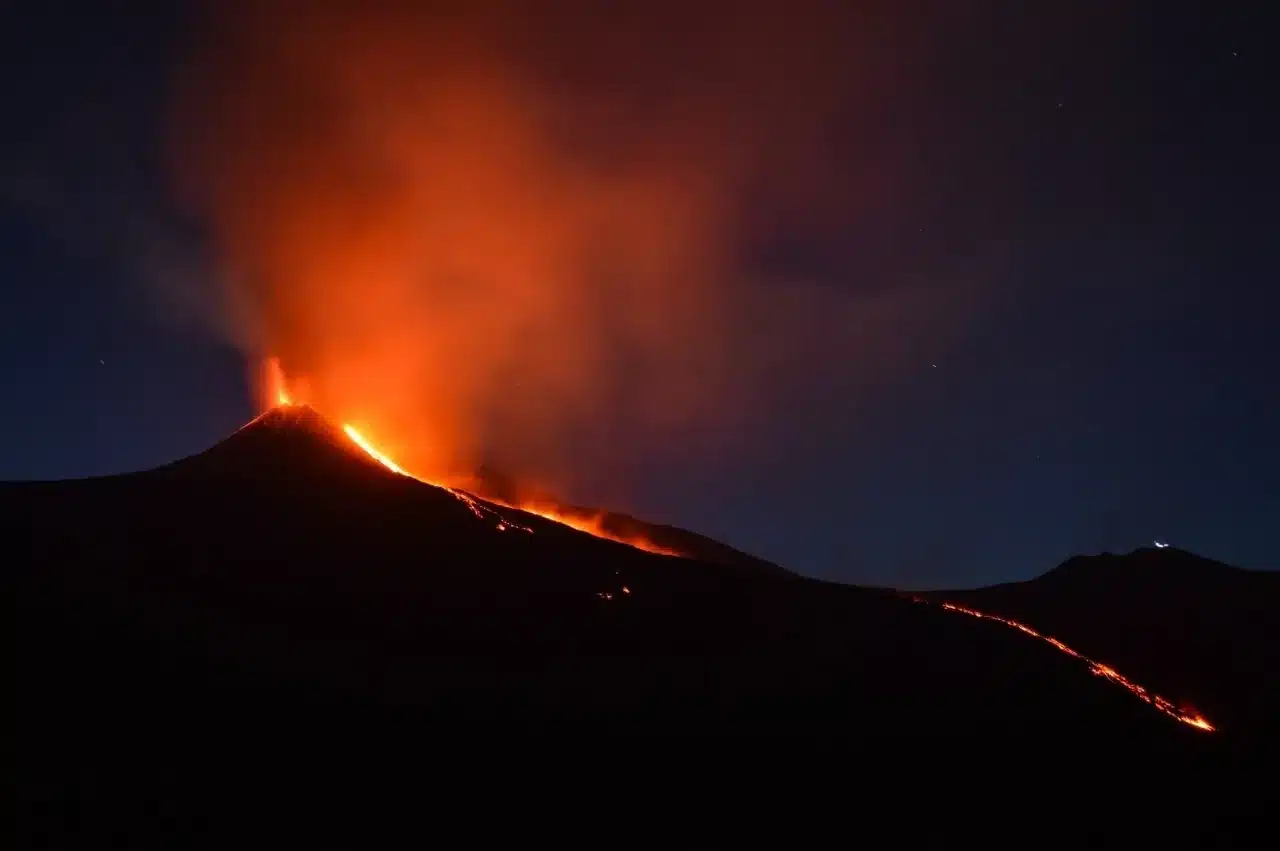About Phlegraean Fields:
- The Phlegraean Fields (also known in Italian as ‘Campi Flegrei’) is an active volcanic area located in the vicinity of Naples, Italy.
- Unlike the nearby Mount Vesuvius, Campi Flegrei is not characterised by a single volcano.
- It is more of a volcanic system, with several centres situated within a depressed area called a caldera (essentially a deep sinkhole or cauldron).
- The caldera has a diameter of about 12-15 km (7.5-9.3 miles).
- It was formed 39,000 years ago after an eruption emptied it of magma. According to a new hypothesis, this eruption could have been the beginning of the end of the Neanderthal.
- One-third of it lies under the Tyrrhenian Sea, between the Italian mainland and the country’s island of Sardinia.
- It is the largest active caldera in Europe. It is much larger than the cone-shaped Vesuvius, which destroyed the ancient Roman city of Pompeii in AD79, and is much more active.
- Phlegraean Fields has been in a restless state since 1950. It is a result of a phenomenon known as bradyseism, which scientists understand to be the gradual movement of part of Earth’s surface caused by the fillingor emptying of an underground magma chamber or hydrothermal activity.
- It last erupted in 1538, after an interval of about 3000 years. This eruption, although minor in comparison, formed Monte Nuovo, a new mountain.
- Scientists consider Phlegraean Fields to be a supervolcano whose eruptions can have worldwide effects.
- These volcanic fields are among the top eight emitters of volcanic carbon dioxide worldwide.
Q1: What is Magma?
Magma is extremely hot liquid and semi-liquid rock located under Earth’s surface. Earth has a layered structure that consists of the inner core, outer core, mantle, and crust. Much of the planet’s mantle consists of magma. This magma can push through holes or cracks in the crust, causing a volcanic eruption. When magma flows or erupts onto Earth’s surface, it is called lava.
News: Supervolcano is starting to wake up, which would plunge the world into chao
Last updated on December, 2025
→ Check out the latest UPSC Syllabus 2026 here.
→ Join Vajiram & Ravi’s Interview Guidance Programme for expert help to crack your final UPSC stage.
→ UPSC Mains Result 2025 is now out.
→ UPSC Notification 2026 is scheduled to be released on January 14, 2026.
→ UPSC Calendar 2026 is released on 15th May, 2025.
→ The UPSC Vacancy 2025 were released 1129, out of which 979 were for UPSC CSE and remaining 150 are for UPSC IFoS.
→ UPSC Prelims 2026 will be conducted on 24th May, 2026 & UPSC Mains 2026 will be conducted on 21st August 2026.
→ The UPSC Selection Process is of 3 stages-Prelims, Mains and Interview.
→ UPSC Result 2024 is released with latest UPSC Marksheet 2024. Check Now!
→ UPSC Prelims Result 2025 is out now for the CSE held on 25 May 2025.
→ UPSC Toppers List 2024 is released now. Shakti Dubey is UPSC AIR 1 2024 Topper.
→ UPSC Prelims Question Paper 2025 and Unofficial Prelims Answer Key 2025 are available now.
→ UPSC Mains Question Paper 2025 is out for Essay, GS 1, 2, 3 & GS 4.
→ UPSC Mains Indian Language Question Paper 2025 is now out.
→ UPSC Mains Optional Question Paper 2025 is now out.
→ Also check Best IAS Coaching in Delhi

















